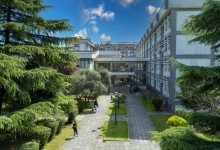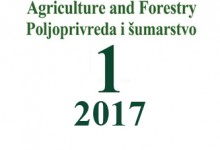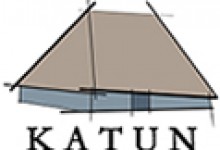Biotechnical Faculty / CONTINENTAL FRUIT GROWING AND MEDICINAL PLANTS / ORGANIC FRUIT PRODUCTION
| Course: | ORGANIC FRUIT PRODUCTION/ |
| Course ID | Course status | Semester | ECTS credits | Lessons (Lessons+Exercises+Laboratory) |
| 5817 | Obavezan | 1 | 6 | 3+2+0 |
| Programs | CONTINENTAL FRUIT GROWING AND MEDICINAL PLANTS |
| Prerequisites | No prerequisites required. |
| Aims | The course aims to familiarize students with the possibilities and conditions for the organic fruit tree production (i.e. fruits), without the use of prohibited chemicals and synthetic fertilizers in accordance with the Law on Organic Agriculture and accompanying regulations. Furthermore, it provides students with the knowledge of establishing orchard under the principles of organic production. |
| Learning outcomes | After getting the passing grade, the student will be able to: Identify the skills of using different methods essential to nursing of orchards in organic growing systems in fruit science. Explain the requirements of cultivars and varieties of fruit trees to climate and land conditions in organic production. Recognize the importance of agro-technical means and bioprotection measures in optimizing conditions of agricultural habitats in terms of organic production. Apply methods of effective learning, teamwork, critical thinking and evaluation of teaching and learning outcomes. |
| Lecturer / Teaching assistant | PhD Gordana Šebek - teacher |
| Methodology | Lectures, exercises, exam task, first test, second test and final exam |
| Plan and program of work | |
| Preparing week | Preparation and registration of the semester |
| I week lectures | Concept and significance |
| I week exercises | Monteorganika - certification company |
| II week lectures | Sustainable organic production |
| II week exercises | Develop monitoring plan on growing crops in rotation, links between crops in mixed plots (incl. Allelopathy), tests on various bio-fertilizers, etc. |
| III week lectures | Soil tillage in organic fruit production |
| III week exercises | Test crops with different tillage practices, weeding / polyethylene film / mulching, preparation of plant protection sprays and application, use of color and pheromone traps. |
| IV week lectures | Organic fertilizers. Selection of cultivars and varieties of pome and stone fruits |
| IV week exercises | Identify nutrition indicators in crops. Carry out a nutrient budgeting programme to maintain soil fertility in intensive organic production. |
| V week lectures | First colloquium . Selection of cultivars and varieties of nuts and berries for production |
| V week exercises | Practical demonstrations of pruning pome and stone fruit species trees in the experimental field. |
| VI week lectures | Possibility of using autochthonous varieties in organic fruit production. Make-up first colloquium. |
| VI week exercises | Design a rotation plan that is suitable for an intensive organic horticultural enterprise at orchard and field scale including protected cropping and selection of suitable varieties. |
| VII week lectures | Organic fruit tree nursing. |
| VII week exercises | Plan effective organic pest and disease control strategies for a range of crops. |
| VIII week lectures | Cultivation of annual plants in the area between the rows. Exam task. |
| VIII week exercises | Companion planting in organic production. |
| IX week lectures | Bioprotection of fruit trees. |
| IX week exercises | Test and monitor crop varieties, use of bio- plant protection products, etc. |
| X week lectures | Harvesting and storage of fruits in organic production |
| X week exercises | Describe effective distribution systems for getting maximum return for organic produce. |
| XI week lectures | Legislation and regulations of organic production. |
| XI week exercises | Implement the National Certification Standards with regard to organising production, processing and distribution of organic produce. |
| XII week lectures | Advantages and disadvantages of organic production. Market of organic products. |
| XII week exercises | The areas of increased labor reported by organic growers include thinning, weed control, fertilization, and spraying, in order of importance. |
| XIII week lectures | Second colloquium. Status and prospects of organic production in Montenegro. |
| XIII week exercises | Apply post-market analysis for identification of key crops, varieties and quantities necessary for production planning. |
| XIV week lectures | Influence of organic production on environment. Make-up second colloquium. |
| XIV week exercises | Principles of good agricultural practice. Principles of integral production. Principles and importance of organic agriculture. |
| XV week lectures | Biodiversity and organic fruit production |
| XV week exercises | Examples |
| Student workload | |
| Per week | Per semester |
| 6 credits x 40/30=8 hours and 0 minuts
3 sat(a) theoretical classes 0 sat(a) practical classes 2 excercises 3 hour(s) i 0 minuts of independent work, including consultations |
Classes and final exam:
8 hour(s) i 0 minuts x 16 =128 hour(s) i 0 minuts Necessary preparation before the beginning of the semester (administration, registration, certification): 8 hour(s) i 0 minuts x 2 =16 hour(s) i 0 minuts Total workload for the subject: 6 x 30=180 hour(s) Additional work for exam preparation in the preparing exam period, including taking the remedial exam from 0 to 30 hours (remaining time from the first two items to the total load for the item) 36 hour(s) i 0 minuts Workload structure: 128 hour(s) i 0 minuts (cources), 16 hour(s) i 0 minuts (preparation), 36 hour(s) i 0 minuts (additional work) |
| Student obligations | Lessons attendance is mandatory for students, as well as doing exam task, both tests and the final exam |
| Consultations | In agreement with the students |
| Literature | 1. Organska poljoprivreda (Organic Agriculture) - group of authors: Snežana Oljača, D. Kovačević, N. Momirović, Evica Mratinić, Branka Sivčev, M. Mladenović, N. Nedić, S. Hristov, Renata Relić, O. Adamović, B. Stojanović, G. Grubić, Natalija Bogdanov, Zorica Sredojević, Vesna Rodić, Jasna Lazarević, Milica Fotrić, Beograd 2008. 2. Creating a Dwarf-Tree Orchard Organic Fruit Growing, part 1. 2005, English translation of the Swiss version. Research Institute of Organic Agriculture, Ackerstrasse, p.o. Box, CH-5070 Frick, Switzerland. 3. Šebek Gordana: Script - Organska proizvodnja voća (Organic fruit production) 2011. The development of this script was supported within LMOC project, which was implemented by the WUS Austria, and financed by the Austrian Development Agency 4. Lind K., Lafer, G., Schloffer K., Innerhofer, G and Meister H. (2003): Organic Fruit Growing. CABI publishing, Wallingford, Oxon OX10 8DE, UK. |
| Examination methods | The forms of testing and grading: - student engagement and attendance: 5 points - exam test: 5 points - first and second test: 2 x 20 40 points - final exam 50 points - Student gets the passing grade by collecting 51 points at least |
| Special remarks | |
| Comment |
| Grade: | F | E | D | C | B | A |
| Number of points | less than 50 points | greater than or equal to 50 points and less than 60 points | greater than or equal to 60 points and less than 70 points | greater than or equal to 70 points and less than 80 points | greater than or equal to 80 points and less than 90 points | greater than or equal to 90 points |
Biotechnical Faculty / CONTINENTAL FRUIT GROWING AND MEDICINAL PLANTS / MASHROOM PRODUCTION
| Course: | MASHROOM PRODUCTION/ |
| Course ID | Course status | Semester | ECTS credits | Lessons (Lessons+Exercises+Laboratory) |
| 5834 | Izborni | 1 | 6 | 3+2+0 |
| Programs | CONTINENTAL FRUIT GROWING AND MEDICINAL PLANTS |
| Prerequisites | |
| Aims | |
| Learning outcomes | |
| Lecturer / Teaching assistant | |
| Methodology |
| Plan and program of work | |
| Preparing week | Preparation and registration of the semester |
| I week lectures | |
| I week exercises | |
| II week lectures | |
| II week exercises | |
| III week lectures | |
| III week exercises | |
| IV week lectures | |
| IV week exercises | |
| V week lectures | |
| V week exercises | |
| VI week lectures | |
| VI week exercises | |
| VII week lectures | |
| VII week exercises | |
| VIII week lectures | |
| VIII week exercises | |
| IX week lectures | |
| IX week exercises | |
| X week lectures | |
| X week exercises | |
| XI week lectures | |
| XI week exercises | |
| XII week lectures | |
| XII week exercises | |
| XIII week lectures | |
| XIII week exercises | |
| XIV week lectures | |
| XIV week exercises | |
| XV week lectures | |
| XV week exercises |
| Student workload | |
| Per week | Per semester |
| 6 credits x 40/30=8 hours and 0 minuts
3 sat(a) theoretical classes 0 sat(a) practical classes 2 excercises 3 hour(s) i 0 minuts of independent work, including consultations |
Classes and final exam:
8 hour(s) i 0 minuts x 16 =128 hour(s) i 0 minuts Necessary preparation before the beginning of the semester (administration, registration, certification): 8 hour(s) i 0 minuts x 2 =16 hour(s) i 0 minuts Total workload for the subject: 6 x 30=180 hour(s) Additional work for exam preparation in the preparing exam period, including taking the remedial exam from 0 to 30 hours (remaining time from the first two items to the total load for the item) 36 hour(s) i 0 minuts Workload structure: 128 hour(s) i 0 minuts (cources), 16 hour(s) i 0 minuts (preparation), 36 hour(s) i 0 minuts (additional work) |
| Student obligations | |
| Consultations | |
| Literature | |
| Examination methods | |
| Special remarks | |
| Comment |
| Grade: | F | E | D | C | B | A |
| Number of points | less than 50 points | greater than or equal to 50 points and less than 60 points | greater than or equal to 60 points and less than 70 points | greater than or equal to 70 points and less than 80 points | greater than or equal to 80 points and less than 90 points | greater than or equal to 90 points |
Biotechnical Faculty / CONTINENTAL FRUIT GROWING AND MEDICINAL PLANTS / POMOLOGY
| Course: | POMOLOGY/ |
| Course ID | Course status | Semester | ECTS credits | Lessons (Lessons+Exercises+Laboratory) |
| 7215 | Obavezan | 2 | 5 | 3+2+0 |
| Programs | CONTINENTAL FRUIT GROWING AND MEDICINAL PLANTS |
| Prerequisites | There are no requirements for listening and passing the course |
| Aims | The aim of the course is to acquaint students with the economic, production and commercial characteristics of the economically most important varieties and rootstocks of continental fruit species, in certain agroecological conditions and with the technology of their cultivation. |
| Learning outcomes | It distinguishes and describes individual fruit groups and determines their production and economic importance. It applies the skills of the technological process of production of certain fruit types. Selects an adequate fruit species for growing in the given agro-ecological conditions. Recognition of the most economically important varieties that are compatible with adequate substrates. |
| Lecturer / Teaching assistant | Prof. dr Gordana Šebek and dr Milena Stojanović |
| Methodology | Lectures and exercises, preparation of seminar papers, preparation for colloquium and final exam |
| Plan and program of work | |
| Preparing week | Preparation and registration of the semester |
| I week lectures | Introduction to Pomology. The aim and importance of the subject. Production and commercial characteristics of leading and new varieties and rootstocks of continental fruit species. |
| I week exercises | Biological properties relevant to the determination and classification of varieties of apples, pears, quince, medlar and rowan. |
| II week lectures | Apple - the leading and economically most important varieties and rootstocks. Agroecological conditions and cultivation technology. |
| II week exercises | Assortment and rootstocks of apples |
| III week lectures | Pear - the leading and economically most important varieties and rootstocks. Agroecological conditions and cultivation technology. |
| III week exercises | Assortment and rootstocks of pears |
| IV week lectures | Quince and medlar - the leading and economically most important varieties and rootstocks. Agroecological conditions and cultivation technology. |
| IV week exercises | Assortment and rootstocks of quince and medlar |
| V week lectures | Plum - the leading and economically most important varieties and rootstocks. Agroecological conditions and cultivation technology. |
| V week exercises | Biological properties relevant to the determination and classification of varieties of plums, peaches, apricots, cherries |
| VI week lectures | Colloquium I |
| VI week exercises | Assortment and rootstocks of plums - the leading and economically most important |
| VII week lectures | Peach and nectarine - the leading and economically most important varieties and rootstocks. Agroecological conditions and cultivation technology. Remedial colloquium I |
| VII week exercises | Assortment and rootstocks of peaches and nectarines - the leading and economically most important |
| VIII week lectures | Cherry and sour cherry - the leading and economically most important varieties and rootstocks. Agroecological conditions and cultivation technology. |
| VIII week exercises | Assortment and rootstocks of cherry and sour cherry - the leading and economically most important |
| IX week lectures | Apricot - the leading and economically most important varieties and rootstocks. Agroecological conditions and cultivation technology. |
| IX week exercises | Assortment and rootstocks of apricot - the leading and economically most important |
| X week lectures | Walnut- the leading and economically most important varieties and rootstocks. Agroecological conditions and cultivation technology. |
| X week exercises | Biological properties relevant to the determination and classification of varieties of walnuts, hazel and chestnut |
| XI week lectures | Hazelnut, almond and chestnut - the leading and economically most important varieties and rootstocks. Agroecological conditions and cultivation technology. |
| XI week exercises | Assortment and rootstocks of hazelnut - the leading and economically most important |
| XII week lectures | Colloquium II |
| XII week exercises | Assortment and rootstocks of almond and chestnut- the leading and economically most important |
| XIII week lectures | Strawberry - the leading and economically most important variety. Agroecological conditions and cultivation technology. Remedial colloquium II |
| XIII week exercises | Biological properties relevant to the determination and classification of varieties of strawberries, raspberries, blackberries, currants, blueberries and Joste Assortment s of strawberries- the leading and economically most important |
| XIV week lectures | Raspberry and blackberry - the leading and economically most important varieties . Agroecological conditions and cultivation technology. |
| XIV week exercises | Assortment of raspberry and blackberry- the leading and economically most important |
| XV week lectures | Blueberry and currant - the leading and economically most important varieties . Agroecological conditions and cultivation technology. |
| XV week exercises | Assortment of raspberry and blackberry- the leading and economically most important |
| Student workload | |
| Per week | Per semester |
| 5 credits x 40/30=6 hours and 40 minuts
3 sat(a) theoretical classes 0 sat(a) practical classes 2 excercises 1 hour(s) i 40 minuts of independent work, including consultations |
Classes and final exam:
6 hour(s) i 40 minuts x 16 =106 hour(s) i 40 minuts Necessary preparation before the beginning of the semester (administration, registration, certification): 6 hour(s) i 40 minuts x 2 =13 hour(s) i 20 minuts Total workload for the subject: 5 x 30=150 hour(s) Additional work for exam preparation in the preparing exam period, including taking the remedial exam from 0 to 30 hours (remaining time from the first two items to the total load for the item) 30 hour(s) i 0 minuts Workload structure: 106 hour(s) i 40 minuts (cources), 13 hour(s) i 20 minuts (preparation), 30 hour(s) i 0 minuts (additional work) |
| Student obligations | Students are required to attend classes, do exercises, seminar work and final exam |
| Consultations | In agreement with the students |
| Literature | 1. Prenkić R. 2011 : Pomologija, WUS- Austrija, UCG-Podgorica 2. Mišić P. 2005 : Jabuka - Nolit, Beograd 3. Mratinić E. 2000 : Kruška, Veselin Masleša, Partenon, Beograd 4. Veličković M. 2006 : Voćarstvo. Narodna Biblioteka, Beograd. 5. Nikolić M., Milivojević J. 2010: Jagodaste voćke tehnologija gajenja, Naučno voćarsko društvo Srbije, Čačak |
| Examination methods | Forms of knowledge testing and assessment: - Attendance and activity in class 10 points -Colloquium I: 15 points - Colloquium II: 15 points - Seminar paper 10 points - Final exam: 50 points A passing grade is obtained if at least 50 points are accumulated cumulative Ocjena Broj poena: A (≥ 90 do 100 poena); B (≥ 80 do< 90); C (≥ 70 do < 80); D (≥ 60 do < 70); E (≥ 50 do < 60) F < od 50 |
| Special remarks | |
| Comment |
| Grade: | F | E | D | C | B | A |
| Number of points | less than 50 points | greater than or equal to 50 points and less than 60 points | greater than or equal to 60 points and less than 70 points | greater than or equal to 70 points and less than 80 points | greater than or equal to 80 points and less than 90 points | greater than or equal to 90 points |
Biotechnical Faculty / CONTINENTAL FRUIT GROWING AND MEDICINAL PLANTS / SUSTAINABLE DEVELOPMENT OF RESOURCES OF .....
| Course: | SUSTAINABLE DEVELOPMENT OF RESOURCES OF ...../ |
| Course ID | Course status | Semester | ECTS credits | Lessons (Lessons+Exercises+Laboratory) |
| 7686 | Obavezan | 1 | 6 | 3+2+0 |
| Programs | CONTINENTAL FRUIT GROWING AND MEDICINAL PLANTS |
| Prerequisites | There are no strings attached |
| Aims | acquiring knowledge that involves balancing economic, social and environmental requirements in order to ensure that the needs of the current generation are met without jeopardizing the ability of future generations to meet their needs |
| Learning outcomes | After passing the exam, students will be able to develop sustainable use natural resources of medicinal plants in Montenegro. They support In situ and Ex situ protection of natural resources. Explain the importance of selection and propagation of medicinal plants from natural populations. They organize conventional and organic production of medicinal herbs |
| Lecturer / Teaching assistant | dr Jasmina Balijagić |
| Methodology | Lectures, exercises, seminar work, test, colloquiums and final exam |
| Plan and program of work | |
| Preparing week | Preparation and registration of the semester |
| I week lectures | Biodiversity |
| I week exercises | Biodiversity - division and importance |
| II week lectures | Natural resources of medicinal plants (global) |
| II week exercises | Medicinal plant resource assessments |
| III week lectures | Sustainable use of natural resources of medicinal plants |
| III week exercises | Getting to know the organs of plants and how to collect them |
| IV week lectures | natural resources of medicinal and aromatic plants of Montenegro |
| IV week exercises | Field exercises - tour of endangered locations |
| V week lectures | Natural resources of medicinal plants in the northern part of Montenegro (Bjelasice, Koritske visoravni) |
| V week exercises | Test |
| VI week lectures | Colloquium I |
| VI week exercises | Natural resources of medicinal plants in the northern part of Montenegro (Lise). |
| VII week lectures | Natural resources of medicinal plants in the northern part of Montenegro (Hajle). |
| VII week exercises | In situ protection of natural resources of medicinal and aromatic plants. |
| VIII week lectures | Ex situ protection of natural resources of medicinal plants) |
| VIII week exercises | Tour of the botanical garden |
| IX week lectures | Conservation of sustainable development of natural resources |
| IX week exercises | Field exercises - tour of endangered localities |
| X week lectures | Selection of plants from natural populations. |
| X week exercises | Collection, processing and storage of seeds |
| XI week lectures | Propagation of medicinal plants. |
| XI week exercises | Collection, processing and storage of seeds |
| XII week lectures | Colloquium II |
| XII week exercises | Testing of seeds in the laboratory, sowing and vegetative propagation. |
| XIII week lectures | Plantation cultivation of medicinal and aromatic plants). |
| XIII week exercises | Selection of the location for raising the plantation |
| XIV week lectures | Organic production of medicinal plants. |
| XIV week exercises | Sowing seeds in laboratory conditions |
| XV week lectures | Legal regulations. Overview lecture. |
| XV week exercises | Application of legal regulations at the local level |
| Student workload | Weekly: 6 credits x 40/30 = 8 hours Structure: lectures - 3 hours exercises - 2 hours 3 hours. individual student work, including consultations During the semester: Classes and final exam: 8 hours x 16 = 128 hours Necessary preparations before the beginning of the semester: 2 x 8 hours = 16 hours Total load for the course: 6 x 30 = 180 hours Supplementary work for exam preparation in the remedial period, including taking the remedial exam from 0 to 36 hours. Load structure: 128 hours /teaching/ + 16 hours (preparation) + 36 hours (additional work) |
| Per week | Per semester |
| 6 credits x 40/30=8 hours and 0 minuts
3 sat(a) theoretical classes 0 sat(a) practical classes 2 excercises 3 hour(s) i 0 minuts of independent work, including consultations |
Classes and final exam:
8 hour(s) i 0 minuts x 16 =128 hour(s) i 0 minuts Necessary preparation before the beginning of the semester (administration, registration, certification): 8 hour(s) i 0 minuts x 2 =16 hour(s) i 0 minuts Total workload for the subject: 6 x 30=180 hour(s) Additional work for exam preparation in the preparing exam period, including taking the remedial exam from 0 to 30 hours (remaining time from the first two items to the total load for the item) 36 hour(s) i 0 minuts Workload structure: 128 hour(s) i 0 minuts (cources), 16 hour(s) i 0 minuts (preparation), 36 hour(s) i 0 minuts (additional work) |
| Student obligations | Students are required to attend classes, take tests, colloquiums and final exams |
| Consultations | In agreement with the students, one hour a week. |
| Literature | 1. Literature: Jovančević and Balijagić (2011): Sustainable development of natural resources of medicinal and aromatic plants - script WUS Austria. 2. Stevanović I Vasić (1995): Biodiversity of Yugoslavia - Faculty of Biology and ECOLIBRI, Belgrade. 3. Professional journals 4. Internet |
| Examination methods | Attendance and activity in class 5; Test 5; Seminar work: 10 points; Colloquium: 2x15 = 30 points; Final exam = 50 points A passing grade is obtained if at least 50 points are accumulated cumulatively Evaluation Number of points: A (≥ 90 to 100 points); B (≥ 80 to < 90); C (≥ 70 to < 80); D (≥ 60 to < 70); E (≥ 50 to < 60) F < of 50 |
| Special remarks | - |
| Comment | - |
| Grade: | F | E | D | C | B | A |
| Number of points | less than 50 points | greater than or equal to 50 points and less than 60 points | greater than or equal to 60 points and less than 70 points | greater than or equal to 70 points and less than 80 points | greater than or equal to 80 points and less than 90 points | greater than or equal to 90 points |
Biotechnical Faculty / CONTINENTAL FRUIT GROWING AND MEDICINAL PLANTS / ORCHARD PLANTING
| Course: | ORCHARD PLANTING/ |
| Course ID | Course status | Semester | ECTS credits | Lessons (Lessons+Exercises+Laboratory) |
| 7696 | Obavezan | 1 | 6 | 3+2+0 |
| Programs | CONTINENTAL FRUIT GROWING AND MEDICINAL PLANTS |
| Prerequisites | |
| Aims | |
| Learning outcomes | |
| Lecturer / Teaching assistant | |
| Methodology |
| Plan and program of work | |
| Preparing week | Preparation and registration of the semester |
| I week lectures | |
| I week exercises | |
| II week lectures | |
| II week exercises | |
| III week lectures | |
| III week exercises | |
| IV week lectures | |
| IV week exercises | |
| V week lectures | |
| V week exercises | |
| VI week lectures | |
| VI week exercises | |
| VII week lectures | |
| VII week exercises | |
| VIII week lectures | |
| VIII week exercises | |
| IX week lectures | |
| IX week exercises | |
| X week lectures | |
| X week exercises | |
| XI week lectures | |
| XI week exercises | |
| XII week lectures | |
| XII week exercises | |
| XIII week lectures | |
| XIII week exercises | |
| XIV week lectures | |
| XIV week exercises | |
| XV week lectures | |
| XV week exercises |
| Student workload | |
| Per week | Per semester |
| 6 credits x 40/30=8 hours and 0 minuts
3 sat(a) theoretical classes 0 sat(a) practical classes 2 excercises 3 hour(s) i 0 minuts of independent work, including consultations |
Classes and final exam:
8 hour(s) i 0 minuts x 16 =128 hour(s) i 0 minuts Necessary preparation before the beginning of the semester (administration, registration, certification): 8 hour(s) i 0 minuts x 2 =16 hour(s) i 0 minuts Total workload for the subject: 6 x 30=180 hour(s) Additional work for exam preparation in the preparing exam period, including taking the remedial exam from 0 to 30 hours (remaining time from the first two items to the total load for the item) 36 hour(s) i 0 minuts Workload structure: 128 hour(s) i 0 minuts (cources), 16 hour(s) i 0 minuts (preparation), 36 hour(s) i 0 minuts (additional work) |
| Student obligations | |
| Consultations | |
| Literature | |
| Examination methods | |
| Special remarks | |
| Comment |
| Grade: | F | E | D | C | B | A |
| Number of points | less than 50 points | greater than or equal to 50 points and less than 60 points | greater than or equal to 60 points and less than 70 points | greater than or equal to 70 points and less than 80 points | greater than or equal to 80 points and less than 90 points | greater than or equal to 90 points |
Biotechnical Faculty / CONTINENTAL FRUIT GROWING AND MEDICINAL PLANTS / PRACTICAL EDUCATION
| Course: | PRACTICAL EDUCATION/ |
| Course ID | Course status | Semester | ECTS credits | Lessons (Lessons+Exercises+Laboratory) |
| 8101 | Obavezan | 2 | 5 | 0+5+0 |
| Programs | CONTINENTAL FRUIT GROWING AND MEDICINAL PLANTS |
| Prerequisites | |
| Aims | |
| Learning outcomes | |
| Lecturer / Teaching assistant | |
| Methodology |
| Plan and program of work | |
| Preparing week | Preparation and registration of the semester |
| I week lectures | |
| I week exercises | |
| II week lectures | |
| II week exercises | |
| III week lectures | |
| III week exercises | |
| IV week lectures | |
| IV week exercises | |
| V week lectures | |
| V week exercises | |
| VI week lectures | |
| VI week exercises | |
| VII week lectures | |
| VII week exercises | |
| VIII week lectures | |
| VIII week exercises | |
| IX week lectures | |
| IX week exercises | |
| X week lectures | |
| X week exercises | |
| XI week lectures | |
| XI week exercises | |
| XII week lectures | |
| XII week exercises | |
| XIII week lectures | |
| XIII week exercises | |
| XIV week lectures | |
| XIV week exercises | |
| XV week lectures | |
| XV week exercises |
| Student workload | |
| Per week | Per semester |
| 5 credits x 40/30=6 hours and 40 minuts
0 sat(a) theoretical classes 0 sat(a) practical classes 5 excercises 1 hour(s) i 40 minuts of independent work, including consultations |
Classes and final exam:
6 hour(s) i 40 minuts x 16 =106 hour(s) i 40 minuts Necessary preparation before the beginning of the semester (administration, registration, certification): 6 hour(s) i 40 minuts x 2 =13 hour(s) i 20 minuts Total workload for the subject: 5 x 30=150 hour(s) Additional work for exam preparation in the preparing exam period, including taking the remedial exam from 0 to 30 hours (remaining time from the first two items to the total load for the item) 30 hour(s) i 0 minuts Workload structure: 106 hour(s) i 40 minuts (cources), 13 hour(s) i 20 minuts (preparation), 30 hour(s) i 0 minuts (additional work) |
| Student obligations | |
| Consultations | |
| Literature | |
| Examination methods | |
| Special remarks | |
| Comment |
| Grade: | F | E | D | C | B | A |
| Number of points | less than 50 points | greater than or equal to 50 points and less than 60 points | greater than or equal to 60 points and less than 70 points | greater than or equal to 70 points and less than 80 points | greater than or equal to 80 points and less than 90 points | greater than or equal to 90 points |
Biotechnical Faculty / CONTINENTAL FRUIT GROWING AND MEDICINAL PLANTS / BREEDING OF FRUIT TREES
| Course: | BREEDING OF FRUIT TREES/ |
| Course ID | Course status | Semester | ECTS credits | Lessons (Lessons+Exercises+Laboratory) |
| 8435 | Obavezan | 1 | 6 | 3+2+0 |
| Programs | CONTINENTAL FRUIT GROWING AND MEDICINAL PLANTS |
| Prerequisites | |
| Aims | |
| Learning outcomes | |
| Lecturer / Teaching assistant | |
| Methodology |
| Plan and program of work | |
| Preparing week | Preparation and registration of the semester |
| I week lectures | |
| I week exercises | |
| II week lectures | |
| II week exercises | |
| III week lectures | |
| III week exercises | |
| IV week lectures | |
| IV week exercises | |
| V week lectures | |
| V week exercises | |
| VI week lectures | |
| VI week exercises | |
| VII week lectures | |
| VII week exercises | |
| VIII week lectures | |
| VIII week exercises | |
| IX week lectures | |
| IX week exercises | |
| X week lectures | |
| X week exercises | |
| XI week lectures | |
| XI week exercises | |
| XII week lectures | |
| XII week exercises | |
| XIII week lectures | |
| XIII week exercises | |
| XIV week lectures | |
| XIV week exercises | |
| XV week lectures | |
| XV week exercises |
| Student workload | |
| Per week | Per semester |
| 6 credits x 40/30=8 hours and 0 minuts
3 sat(a) theoretical classes 0 sat(a) practical classes 2 excercises 3 hour(s) i 0 minuts of independent work, including consultations |
Classes and final exam:
8 hour(s) i 0 minuts x 16 =128 hour(s) i 0 minuts Necessary preparation before the beginning of the semester (administration, registration, certification): 8 hour(s) i 0 minuts x 2 =16 hour(s) i 0 minuts Total workload for the subject: 6 x 30=180 hour(s) Additional work for exam preparation in the preparing exam period, including taking the remedial exam from 0 to 30 hours (remaining time from the first two items to the total load for the item) 36 hour(s) i 0 minuts Workload structure: 128 hour(s) i 0 minuts (cources), 16 hour(s) i 0 minuts (preparation), 36 hour(s) i 0 minuts (additional work) |
| Student obligations | |
| Consultations | |
| Literature | |
| Examination methods | |
| Special remarks | |
| Comment |
| Grade: | F | E | D | C | B | A |
| Number of points | less than 50 points | greater than or equal to 50 points and less than 60 points | greater than or equal to 60 points and less than 70 points | greater than or equal to 70 points and less than 80 points | greater than or equal to 80 points and less than 90 points | greater than or equal to 90 points |
Biotechnical Faculty / CONTINENTAL FRUIT GROWING AND MEDICINAL PLANTS / TECHNOLOGY OF MEDICINAL PLANTS CULTIVATION
| Course: | TECHNOLOGY OF MEDICINAL PLANTS CULTIVATION/ |
| Course ID | Course status | Semester | ECTS credits | Lessons (Lessons+Exercises+Laboratory) |
| 8436 | Obavezan | 2 | 5 | 3+2+0 |
| Programs | CONTINENTAL FRUIT GROWING AND MEDICINAL PLANTS |
| Prerequisites | There are no conditions |
| Aims | introducing students to the technology of growing medicinal plants that are most often grown in Montenegro in the surrounding area |
| Learning outcomes | After passing the exam, students will be able to: determine, plan, explain, apply and manage production in an organized manner |
| Lecturer / Teaching assistant | dr Jasmina Balijagić |
| Methodology | Lectures, exercises, seminar work, test, colloquiums and final exam |
| Plan and program of work | |
| Preparing week | Preparation and registration of the semester |
| I week lectures | Modern production of medicinal plants. The technology of growing medicinal plants according to the principles of organic agriculture |
| I week exercises | Ecological conditions |
| II week lectures | Technology of growing herbaceous plants with alkaloids |
| II week exercises | Collection of herbarium material, division of alkaloids, organs in which alkaloids are collected. |
| III week lectures | Technology of growing herbaceous plants with heterosides |
| III week exercises | Collection of herbarium material, division of heterosides, organs where heterosides are collected. in |
| IV week lectures | Technology of cultivation of medicinal plants rich in tannins |
| IV week exercises | Collection of herbarium material, division of tannins, organs in which tannins are collected |
| V week lectures | Technology of growing herbaceous plants with essential aromatic oils. |
| V week exercises | Colloquium I |
| VI week lectures | Technology of growing woody plants with essential aromatic oils |
| VI week exercises | Collection of herbarium material, division of essential oils, organs in which essential aromatic oils are collected. Corrections of colloquium I |
| VII week lectures | Technology of growing herbaceous plants with oils |
| VII week exercises | Collection of herbarium material, division of oils, organs in which oils are collected. |
| VIII week lectures | Technology of growing herbaceous plants with slimes |
| VIII week exercises | Collection of herbarium material, division of mucus, organs in which mucus is collected. |
| IX week lectures | Technology of growing herbaceous plants rich in vitamins |
| IX week exercises | Collection of herbarium material, distribution of vitamins, organs in which vitamins are collected... |
| X week lectures | Technology of growing woody plants rich in vitamins |
| X week exercises | Collection of herbarium material, distribution of vitamins, organs in which vitamins are collected. |
| XI week lectures | Colloquium II |
| XI week exercises | Colloquium II |
| XII week lectures | Technology of cultivation of tonic plants |
| XII week exercises | Collection of herbarium material, distribution of tonics, organs in which tonics are collected |
| XIII week lectures | Cultivation of medicinal plants in the mountainous region |
| XIII week exercises | Remedial colloquium II |
| XIV week lectures | Technology of cultivation of endangered plant species |
| XIV week exercises | Collection of herbarium material, seeds and reproductive organs |
| XV week lectures | Overview lecture |
| XV week exercises | Review exercises |
| Student workload | Weekly: 6 credits x 40/30 = 8 hours Structure: lectures - 3 hours exercises - 2 hours 3 hours. individual student work, including consultations During the semester: Classes and final exam: 8 hours x 16 = 128 hours Necessary preparations before the beginning of the semester: 2 x 8 hours = 16 hours Total workload for the course: 6 x 30 = 180 hours Supplementary work: for exam preparation in the remedial exam period, including taking the remedial exam 0 - 42 hours Load structure: 128 hours /teaching/ + 16 hours (preparation) + 36 hours (additional work) |
| Per week | Per semester |
| 5 credits x 40/30=6 hours and 40 minuts
3 sat(a) theoretical classes 0 sat(a) practical classes 2 excercises 1 hour(s) i 40 minuts of independent work, including consultations |
Classes and final exam:
6 hour(s) i 40 minuts x 16 =106 hour(s) i 40 minuts Necessary preparation before the beginning of the semester (administration, registration, certification): 6 hour(s) i 40 minuts x 2 =13 hour(s) i 20 minuts Total workload for the subject: 5 x 30=150 hour(s) Additional work for exam preparation in the preparing exam period, including taking the remedial exam from 0 to 30 hours (remaining time from the first two items to the total load for the item) 30 hour(s) i 0 minuts Workload structure: 106 hour(s) i 40 minuts (cources), 13 hour(s) i 20 minuts (preparation), 30 hour(s) i 0 minuts (additional work) |
| Student obligations | Students are required to attend classes, take tests, colloquiums and final exams |
| Consultations | Consultations, 2x a week. |
| Literature | 1. Stepanović, B., Radanović, D. (2011): Technology of growing medicinal and aromatic plants in Serbia. 2. Kišgeci, J. (2008): Medicinal and aromatic plants - Parthenon Belgrade. 3. Professional magazines 4. Internet |
| Examination methods | Attendance and activity in class: 5 points; Seminar paper: 15 points; Colloquium: 2x15 = 30 points; Final exam = 50 points Final exam = 50 points A passing grade is obtained if at least 50 points are accumulated cumulatively |
| Special remarks | - |
| Comment | - |
| Grade: | F | E | D | C | B | A |
| Number of points | less than 50 points | greater than or equal to 50 points and less than 60 points | greater than or equal to 60 points and less than 70 points | greater than or equal to 70 points and less than 80 points | greater than or equal to 80 points and less than 90 points | greater than or equal to 90 points |
Biotechnical Faculty / CONTINENTAL FRUIT GROWING AND MEDICINAL PLANTS / TECHNOLOGY OF FRUIT BRANDIES
| Course: | TECHNOLOGY OF FRUIT BRANDIES/ |
| Course ID | Course status | Semester | ECTS credits | Lessons (Lessons+Exercises+Laboratory) |
| 8437 | Izborni | 2 | 5 | 3+2+0 |
| Programs | CONTINENTAL FRUIT GROWING AND MEDICINAL PLANTS |
| Prerequisites | No prerequisites |
| Aims | The course aims to introduce students to theoretical and practical knowledge in the field of technology of fruit brandies. Students will be acquainted with the technological process of production of fruit brandies, modern trends in the production and quality of fruit brandies. |
| Learning outcomes | After passing the exam, the student will be able to: - Identify basic technical and technological conditions for production of fruit brandies and recognize their quality elements. - Know the technological features of raw materials for the production of fruit brandies. - Know the primary processing, alcoholic fermentation, distillation, aging and formation of fruit brandies. - Apply knowledge in the field of classical and contemporary distillation apparatus and devices. - Recognize basic deficiencies and contamination of fruit brandies and how to eliminate them. - Apply the method of sensory quality evaluation of fruit brandies. - Apply engineering approach to defining and solving problems relating to the production and quality of fruit brandies. |
| Lecturer / Teaching assistant | Doc.dr Danijela Raičević |
| Methodology | Lectures, exercises, seminar papers, colloquia and final exam. |
| Plan and program of work | |
| Preparing week | Preparation and registration of the semester |
| I week lectures | Introduction to the course. History of fruit brandies production. |
| I week exercises | Presenting the leading producers of fruit brandies. |
| II week lectures | Classification of fruit brandies. |
| II week exercises | Designing the technological scheme of fruit brandies production. |
| III week lectures | Raw materials for the production of fruit brandies. The technological characteristics of raw materials for the production of different types of fruit brandies. |
| III week exercises | Presentation of the most important fruit varieties used for brandy production. |
| IV week lectures | Fruit processing. |
| IV week exercises | Determination of technological maturity of fruit (determination of sugar content and total acids and pH). |
| V week lectures | Alcoholic fermentation. |
| V week exercises | Introduction to an industrial production facility; introduction to technological equipment and fruit brandies production process. |
| VI week lectures | Colloquium I |
| VI week exercises | Visit to distilleries. |
| VII week lectures | Basics of distillation theory. |
| VII week exercises | Distillery design and distillation equipment. |
| VIII week lectures | Classic and contemporary distillation apparatus and devices and their use. |
| VIII week exercises | Simple distillation equipment – description, principle of multiple distillations. |
| IX week lectures | The chemical composition and properties of fruit distillates. |
| IX week exercises | Measurement of the alcoholic strength of the distillate by alcoholmeter. |
| X week lectures | The chemical composition of brandies. The additives in production of fruit brandies. |
| X week exercises | Calculating the amount of additives in the production of fruit brandies. |
| XI week lectures | Containers for storing and fermenting of crashed fruit and acceptance of distillate (brandy). |
| XI week exercises | Maintenance of containers for storing and maturing of fruit brandies. |
| XII week lectures | Contemporary trends in finalizing the production of fruit brandies. Regulations on the quality and health safety requirements for alcoholic beverages |
| XII week exercises | Physicochemical methods of analysing the basic ingredients of alcoholic beverages. |
| XIII week lectures | Colloquium II |
| XIII week exercises | Visit to distilleries. |
| XIV week lectures | Quality control of fruit brandies. |
| XIV week exercises | Standardization of brandy in terms of alcoholic strength and total acidity. Dilution of distillates with demineralised water. |
| XV week lectures | Deficiencies and contamination of fruit brandies. |
| XV week exercises | Sensory evaluation ofstrong alcoholic beverages. |
| Student workload | |
| Per week | Per semester |
| 5 credits x 40/30=6 hours and 40 minuts
3 sat(a) theoretical classes 0 sat(a) practical classes 2 excercises 1 hour(s) i 40 minuts of independent work, including consultations |
Classes and final exam:
6 hour(s) i 40 minuts x 16 =106 hour(s) i 40 minuts Necessary preparation before the beginning of the semester (administration, registration, certification): 6 hour(s) i 40 minuts x 2 =13 hour(s) i 20 minuts Total workload for the subject: 5 x 30=150 hour(s) Additional work for exam preparation in the preparing exam period, including taking the remedial exam from 0 to 30 hours (remaining time from the first two items to the total load for the item) 30 hour(s) i 0 minuts Workload structure: 106 hour(s) i 40 minuts (cources), 13 hour(s) i 20 minuts (preparation), 30 hour(s) i 0 minuts (additional work) |
| Student obligations | Lessons (lectures and exercises) attendance is mandatory for students, as well as preparing seminar papers, colloquiums and a final exam. |
| Consultations | In agreement with the students, one hour a week. |
| Literature | Students will receive printed material. Other literature : Nikićević N., Tešević V.(2008): Jaka alkoholna pića - analitika i praksa (udžbenik), Beograd; Lučić R.(1987): Proizvodnja jakih alkoholnih pića, Nolit, Beograd; Jović S. (2006): Priručnik za spravljanje rakije, Partenon, Beograd |
| Examination methods | Class attendance: 5 points; Seminar paper: 5 points; Colloquium: (2 x 20) 40 points; Final exam: 50 points. Grades and points: A (≥ 90 to 100 points); B (≥ 80 to < 90); C (≥ 70 to < 80); D (≥ 60 to< 70); E (≥ 50 to < 60); F < of 50 |
| Special remarks | |
| Comment |
| Grade: | F | E | D | C | B | A |
| Number of points | less than 50 points | greater than or equal to 50 points and less than 60 points | greater than or equal to 60 points and less than 70 points | greater than or equal to 70 points and less than 80 points | greater than or equal to 80 points and less than 90 points | greater than or equal to 90 points |











